Mealybug Control: Simple Techniques That Work
Along with the well-known aphids, the mealybug is one of the most common and harmful pests for our plants. Fighting the mealybug and eliminating it from plants is not easy, but today we will explain how to do it!
If you have had the misfortune to run into this pest or if you want to be aware, we will show you how to kill mealybugs without harming your plants.
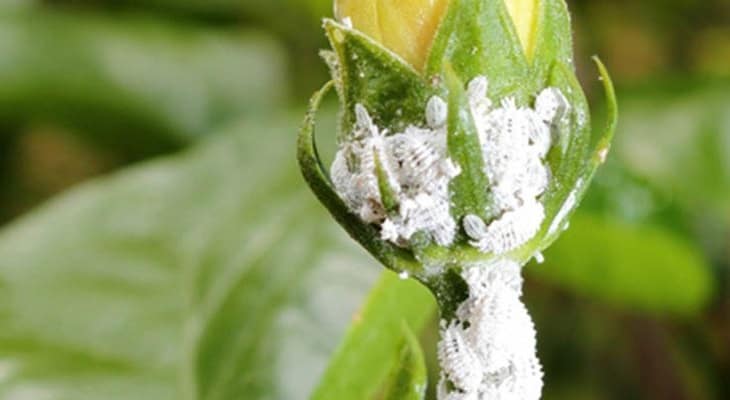
Contents
How to Detect Mealybugs in Plants
The mealybug is easy to eliminate if it is detected early. To do this, it is important to check your plants periodically, paying special attention to the back of the leaves, as this is where this pest is mostly found.
Types of Mealybugs
There are several types of mealybugs, but the most popular varieties of mealybugs are the following:
Citrus mealybug (Planococcus citri)
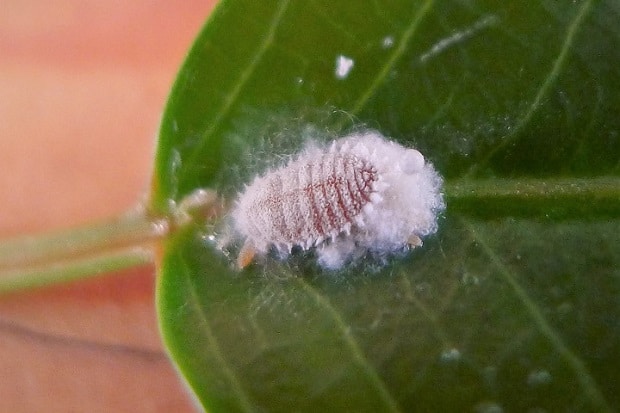
This type of mealybug can attack a large number of plants, whether indoors or outdoors. They are soft-bodied, grayish-white, or pinkish insects that can measure up to 4 mm in length and are usually found mainly in the axils of the leaves and other places that are difficult to access, such as between several tangled stems.
They secrete a silky, shiny white substance (similar to cotton) under which they hide the eggs, making the attacked plants sticky and prone to developing black mold.
Ground mealybug (Rhizoecus falcifer)
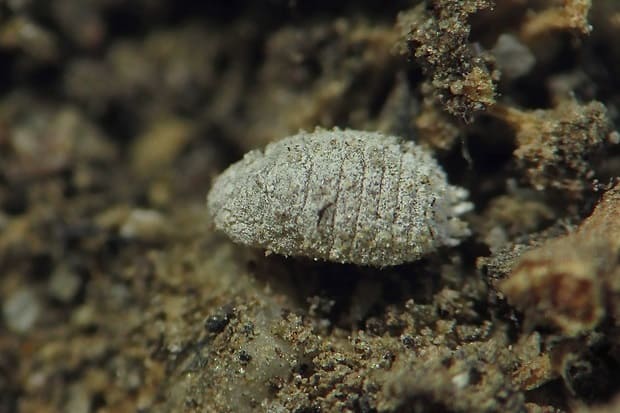
This type of mealybug mainly attacks plants grown in pots, specifically cacti, succulents, geraniums, ferns, African violets, and fuchsias.
They are up to 2 mm long and are usually covered, together with the roots, under a white serous powder.
Long-tailed mealybug (Pseudococcus longispinus)
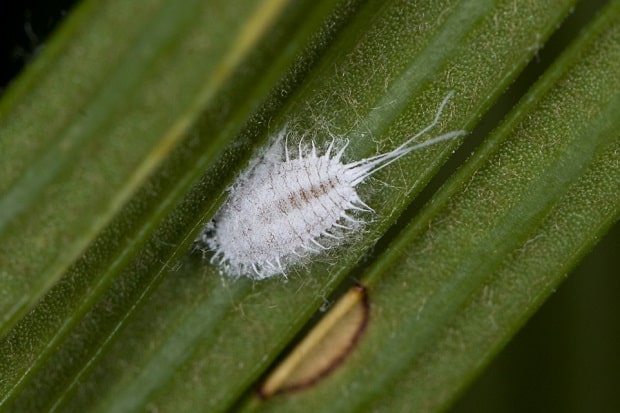
Long-tailed mealybug occurs naturally in tropical and subtropical regions, but these days it is widespread throughout the world. The range of host plants of long-tailed mealybugs is less extensive than that of the citrus mealybug but it nevertheless encompasses many species of (ornamental) crops (e.g. croton, orchids, grapes, avocado, apple, citrus). The species often inhabits concealed places such as auxiliary buds and prefers a warm, humid environment.
The long-tailed mealybug is easily recognized by the long, posterior tail filaments, which are at least the length of the body itself. The length of the other filaments is roughly half the width of the body. The female is 3 – 4 mm long.
Obscure mealybug (Pseudococcus viburni)
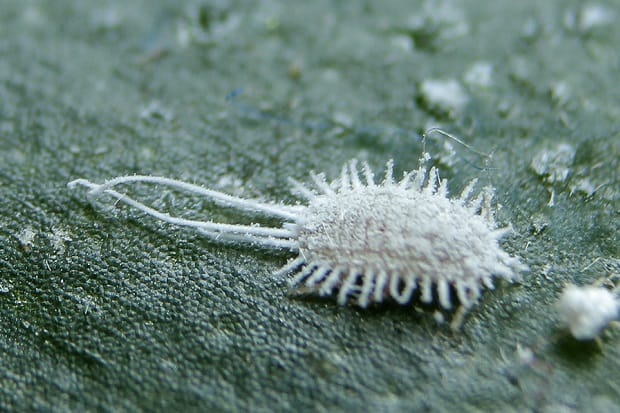
The obscure mealybug has a very similar appearance to the citrus mealybug, but its body is covered with a thicker layer of wax, the filaments around the body are longer (20-50% of the body size) and the two tail filaments are always markedly longer than the others.
The obscure mealybug is sometimes encountered on tomatoes, primarily at the foot of the stalk. These mealybugs can also cause damage to ornamental crops such as passiflora, pelargonium, and orchids. Pseudococcus viburni is difficult to control biologically.
What Causes Mealybugs
One of the main reasons why mealybugs can reproduce is because the environment is too dry. Indoor plants are often the ones that get attacked the most by these bugs, mainly because of specific humidity conditions.
Having high heating is a big factor too. It makes the environment even drier, so it’s important to make sure the environment doesn’t dry out and make it easier for mealybugs to appear.
One way to increase the humidity in your home is by placing containers filled with water near the heating radiators. The water vapor will make the room more humid. Another, more effective but less cost-friendly way, is to use humidifiers in your home.
If you have a severe infestation, the best way to handle it is to detect it early, before the bugs spread all over the plant. Once you notice mealybugs, you should take action immediately by getting rid of all of them. If even one mealybug is left on the plant, it can reproduce and cause the infestation to continue.
What Gets Rid of Mealybugs
Once the plant is infected with mealybugs, there are three methods to eliminate it:
- Using household items
- Using chemical products
- Using natural methods
1. Using Household Items
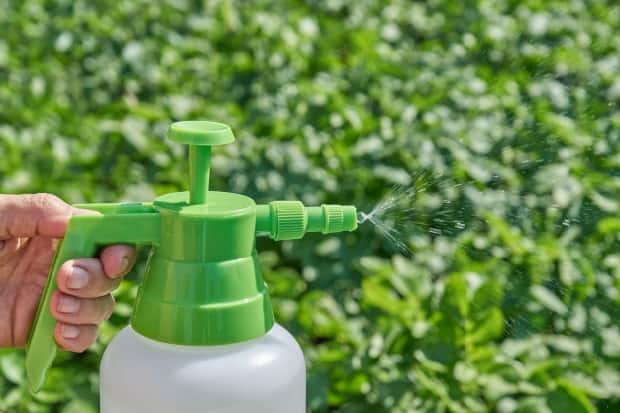
To eliminate mealybugs using household items, you can follow these steps:
- Soaked cloth or cotton swab: Soak a cloth or cotton swab in alcohol and carefully check all the leaves of the plant. Remove any mealybugs that you find.
- Spraying mixture: If the infestation is hard to reach or if you have many plants affected, create a mixture of rubbing alcohol, liquid soap, and water. Dilute the soap well in water, and then spray the plants. Afterward, manually remove any remaining mealybugs using a cloth or cotton.
- Brush method for cacti: If you’re dealing with cacti that have long spines, it can be tricky to access the mealybugs. In this case, you can use a brush soaked in alcohol or a mixture of alcohol and soap to remove the pests.
Insecticidal soap (link here*) is a suitable option for treating mealybugs, as well as other pests like aphids or spider mites, and fungal issues such as mildew and powdery mildew.
This is an affiliate link. As an Amazon Associate, we earn from qualifying purchases which means we receive a small commission when you make a purchase, at zero cost to you.
2. Using Chemical Products
If the natural methods mentioned above don’t completely eliminate the mealybugs, you can resort to using chemical products that are specifically designed to kill these pests or prevent their reappearance.
After manually removing all the mealybugs from the plant, take a systemic insecticide that targets mealybugs and spray the entire plant thoroughly. Remember to keep the affected plant separate from those that are not impacted to prevent potential infections from spreading.
Regularly monitor the plant and its leaves, paying close attention to the lower parts of the stems and the undersides of the leaves to ensure no mealybugs have survived. To effectively combat mealybugs, repeat the application of the systemic insecticide every 15 days. For plants with tough leaves like yuccas or ficus, you can use neem oil insecticide. This not only kills mealybugs but also gives the leaves a shiny appearance.
It’s crucial to take special care when applying these products to avoid damaging the plant and to prevent ingestion by people or domestic animals.
If you want to know what kills mealybugs instantly, look no further than the products below.
When using insecticides against mealybugs, it’s important to follow several guidelines:
- Choose a well-ventilated area to spray the plant, away from people and animals. If needed, cover cages or fish tanks to protect pets.
- Wash the plant’s leaves with soap and water before applying the insecticide to reduce stress on the plant.
- Apply the right amount of product, ensuring that the entire plant is wet without product accumulation, with special attention to the undersides of leaves.
- Avoid spraying on extremely hot or cold days, as it adds stress to the plant. Keep the treated plant in the shade for 24 hours after spraying.
- Read and carefully follow the instructions provided by the manufacturer to prevent harm to plants, people, and other animals.
3. Using Natural Methods
Natural methods refer to using plants or animals to fight against mealybugs.
Certain plants can be effective in dealing with mealybug infestations. Here are a few noteworthy examples:
- Fern
- Tobacco
- Oregano
The following table shows the series of insects that are used for the biological treatment of mealybugs:
| Mealybug ladybird (Cryptolaemus montrouzieri) | 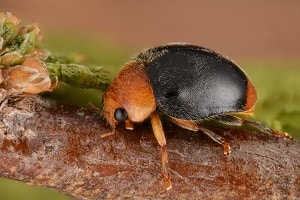 |
| Mealybug parasitic wasp (Leptomastix dactylopii) | 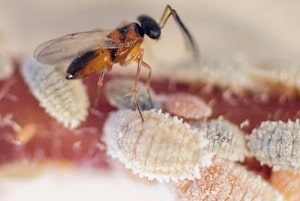 |
| Ladybird beetle (Rodolia cardinalis) | 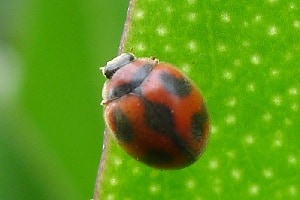 |
| Scymnus sp. | 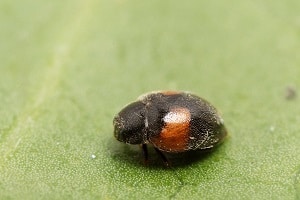 |
| Larvae of Common green lacewing (Chrysoperla carnea) | 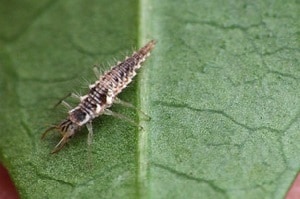 |
FAQ’s
Are mealybugs harmful to humans?
No! The concern that mealybugs could be harmful to humans is unfounded. They neither have a proboscis (sucking mouthpart) nor can they bite humans. The fine hairs on the surface are also harmless.
They also cannot infect humans. The only hosts available to mealybugs as a source of food are plants.
Where do mealybugs come from?
Mealybugs often find their way into your home or garden through newly purchased plants. It’s essential to carefully inspect plants at hardware stores or garden centers. If you notice white cottony webs on the plants, it’s best to avoid buying them.
Choosing the right location for your plants is crucial to prevent mealybug infestations. Avoid placing them in areas with insufficient light. Dry and warm air produced by heating systems creates ideal conditions for mealybugs to multiply. Therefore, it’s important to ensure proper ventilation, especially in winter, and avoid placing plants directly over heaters. Additionally, be cautious about using excessive nitrogen fertilizers, as it can attract mealybugs.



